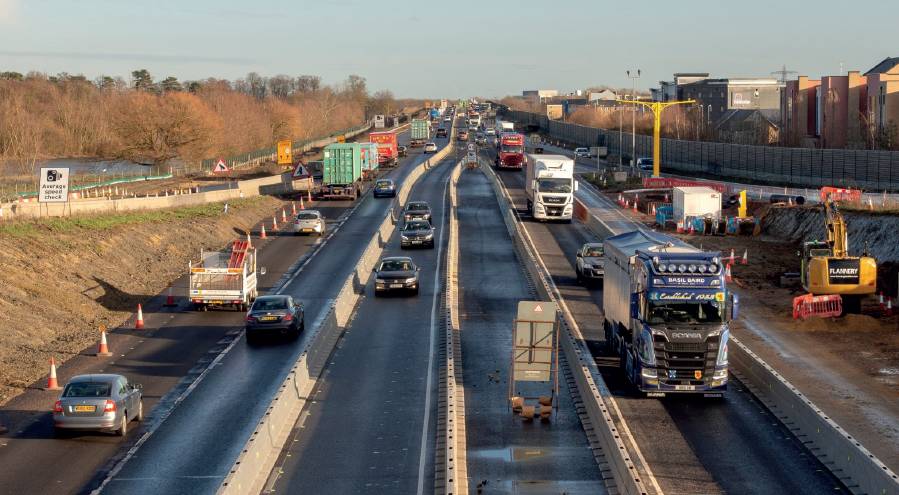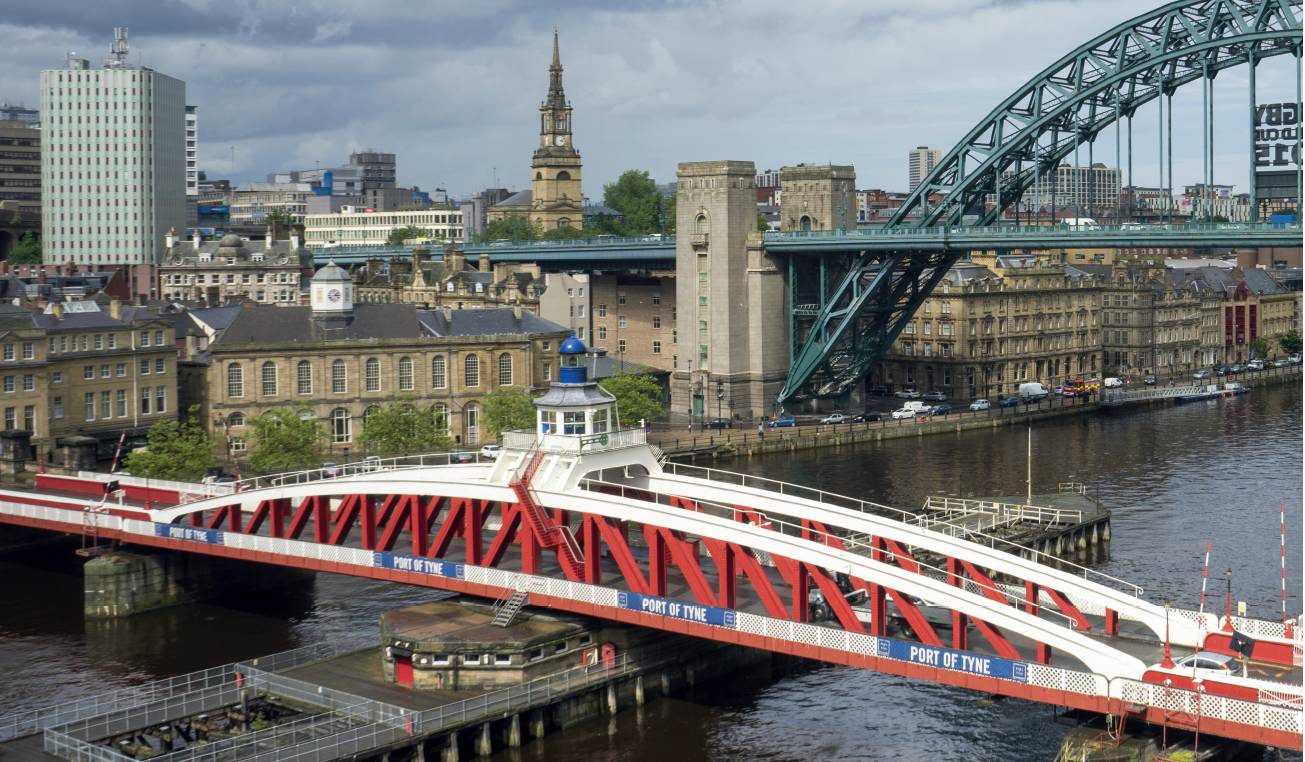Essential news & information from newcivilengineer.com
The Edit
ROADS
Government urged to reconsider expensive and complex road enhancement projects
The cross-party Commons transport select committee has urged ministers to reconsider planned enhancements to the strategic road network (SRN) as they are expensive and complex.
 The committee’s latest report says the government’s first two, five-year Road Investment Strategies, RIS1 and RIS2, had suffered from “overly ambitious portfolio planning”.
The committee’s latest report says the government’s first two, five-year Road Investment Strategies, RIS1 and RIS2, had suffered from “overly ambitious portfolio planning”.
The MPs said National Highways had “overspent and underdelivered”. Some projects initially earmarked for the third road investment plan, RIS3, which runs from 2025 to 2030, have alread been delayed to RIS4 which covers 2030 to 2035.
The committee’s report says there was a case for cutting down each RIS project portfolio so that National Highways could avoid having to defer projects and so that resources could be dedicated to ensuring the timely completion of projects. It also says that taxpayers’ money would be better spent renewing older parts of the SRN and focusing on running the network to “better meet the needs of the drivers and industries that rely on it”.
The report also investigates the way that the management of the SRN contributes to economic and net zero policies. It says that the SRN is important for economic growth, but questions the extent to which further investment in the network would help to boost growth. The report warns that the uptake of cleaner vehicles will be too slow to mitigate increases in emissions caused by traffic growth.
Department for Transport models for future travel scenarios predict that road traffic on the SRN will increase.
ENERGY
Electricity commissioner calls for quicker project approvals
Independent electricity networks commissioner Nick Winser has urged the government to halve the time it takes for clean electricity transmission projects to be approved.
According to Winser, projects take around eight years in pre-application and 18 months in the planning application stage, resulting in a total time to deliver of 12 to 14 years. He has published a report outlining a range of recommendations to accelerate the deployment of infrastructure to support clean energy including, substations and pylons.
Projects currently take 18 months to get planning permission as revisions to elements such as route design lead to lengthy project redesigns by developers.
Winser recommends a 12-month fast-track approval process.
KEY STAT
12 monthsLength of fast track approval for renewable energy projects called for by energy commissioner
STRUCTURES
National Highways starts Cumbria bridge infill removal
National Highways has begun to remove concrete infill from Great Musgrave Bridge in Cumbria. The 8.4m span road bridge over the disused Eden Valley Railway was infilled by AmcoGiffen on behalf of National Highways in 2021 after the roads body said the structure was unstable.
The road operator was forced to submit a retrospective planning application to retain the infill, but this was rejected by Eden District Council in June last year. An enforcement notice was then issued requiring the removal of the fill by 11 October this year.
Work to remove the infill, also being conducted by AmcoGiffen, began in July and drilling of cores into the infill material from the south side of the bridge has started.
National Highways said the work has been designed to proceed without harming the structure. It said additional work will also strengthen the bridge where required.
STRUCTURES
Newcastle bridge campaign
 A Newcastle MP is campaigning to raise £5M to restore the city’s River Tyne swing bridge. Chi Onwurah wants to revive the Grade II listed swing bridge, which is capable of being swung up to 90° to allow boats to pass up the Tyne.
A Newcastle MP is campaigning to raise £5M to restore the city’s River Tyne swing bridge. Chi Onwurah wants to revive the Grade II listed swing bridge, which is capable of being swung up to 90° to allow boats to pass up the Tyne.
It has not been opened since 2019 due to technical issues.
Onwurah told NCE that she hoped the bridge would reopen in time for its 150th anniversary in 2026. She added that more should be done to preserve Britain’s engineering heritage.
RAIL
Illinois seeks federal funding for major Chicago rail upgrade
Governor of Illinois Jay Robert Pritzker is seeking US government help to pay for the $1.1bn (£860M) upgrade of Chicago’s regional rail infrastructure including Union Station.
Pritzker, the City of Chicago and Amtrak want the Federal Railroad Administration to allocate £683M to the project known Chicago Hub Improvement Program (Chip).
Chip will upgrade platforms and facilities at Union Station, reconfigure track alignments on Chicago’s south side and re-establish the main line between Chicago and Detroit, Michigan. Plans include a new bridge over the Chicago River. This will enable trains using Union Station to avoid having to reverse to gain access to destinations on the former Illinois Central main line.
The upgrades to more than 15 inter-city routes will enable an increase in Amtrak services to cities across the Midwest by eliminating bottlenecks.
KEY STAT
£860MValue of Chicago regional rail improvement programme
FLOODS
£70M spent on Surrey flood defence scheme before work starts
The Environment Agency has spent £70M on pre-construction work for the £640M River Thames flood defence scheme in Surrey since 2014. The information was released to NCE after it made a Freedom of Information request to the Environment Agency.
The scheme involves work along the River Thames between Teddington and Egham. It is part of a new landscape-based approach to protecting more than 11,000 buildings and infrastructure including the M3 motorway. It involves creating more than 8km of flood channels to carry excess rainfall and prevent the river from bursting its banks.
Flow capacity of the weirs at Sunbury, Molesey and Teddington will be increased. River structures will also be upgraded.
The Environment Agency said most of the £70M has gone towards designing the flood channels and flood mitigation work.
TUNNELS
Ground freeze aids Brenner Tunnel work under river
A joint venture led by WeBuild has completed the Isarco River underpass for the £13.2bn Brenner Base Tunnel project. The railway tunnel runs under the Alps between Verona, Italy and Innsbruck, Austria.
The Isarco River underpass connects the Brenner Base tunnel to the existing Brenner line and Fortezza railway station. It features 4.5km of main tunnels and 1.5km of tunnels that connect to the existing Brenner mainline.
The work takes the tunnel under the Isarco River, the A22 motorway and a local road. Two 25m to 30m shafts were dug on both sides of the Isarco River to enable a riverbed freezing operation ahead of tunnelling work.
Soil permeability was reduced by the injection of cementitious material and the ground was frozen to create a 1m thick frozen shell around the tunnel route so that it could be excavated within metres of the river without the risk of water ingress to the tunnel.
- Sign up for New Civil Engineer’s Breaking, Daily and Weekly news alerts at newcivilengineer.com/newsletters